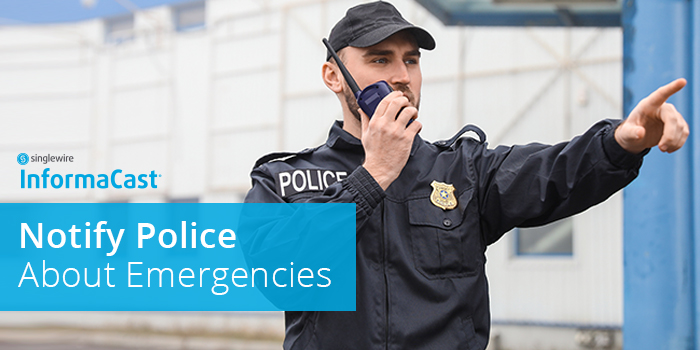Notify Law Enforcement About Emergencies through Police Response Alarm Systems
If your organization experiences a serious emergency, being able to contact first responders is a must. On-site safety teams, people trained in first aid, and company leaders can all provide assistance and direction, but having outside help can ensure that incidents are resolved quickly and with the expertise needed to secure successful outcomes. However, for many organizations asking for assistance from people within a facility and those outside it are two different processes. This often means that from the beginning, there are communication challenges that need to be overcome to minimize confusion and get people the help they need to stay safe.
That’s where police response alarm systems can help. With the single push of a button, organizations can alert all their people as well as local law enforcement about an emergency. In this blog post, we’ll outline how you implement this kind of solution in your organization to enhance the speed and reach of your emergency messages
Delivering the Message
Consider this scenario: A violent intruder enters your building, and someone within your organization notices there is an issue and presses a panic button. The panic button serves as a trigger connected to your police response alarm system that will send out preconfigured text and audio alerts to on-site security teams. Messages can be delivered using a variety of different methods and devices, including SMS text messages, push notifications, emails, phone calls, desktop alerts, digital signage, IP speakers, and security radios. These notifications can be grouped to reach a select group of personnel and zoned to only be delivered to security offices. This helps avoid causing panic within buildings and helps security teams respond as quickly as possible.
While the initial panic button trigger sends notifications to personnel on-site, additional automated messages can be sent to the local police department. These notifications can also be delivered in a few different ways, including pre-recorded audio or text-to-speech messages that are sent as a phone call to your local police department’s non-emergency line. Emails can be sent to a designated address that is reserved only for emergency communications, and desktop notifications can be sent to computers at the police department that are connected to your organization’s notification system. Audio alerts can also be sent directly to police radios, which can be helpful if local patrol cars are in the area, making response times even faster.
Managing the Incident
Within your facilities, security teams should still call 911 to alert dispatchers of an incident. While police response alarm systems can offer immediate communications to law enforcement, speaking with a dispatcher can provide much-needed context and ensure that outside help is on the way. Using additional security tools like security cameras, security personnel can gain real-time insights as an event unfolds and relay that information to the police to better coordinate a response. Links to security camera feeds can be included in notifications.
Your system can then be used to send follow-up messages that offer updates on how the situation is progressing and to check in on people to see if they are safe or if they need assistance. Once security teams and local police have resolved the incident, mass notifications can be used to give the “all clear” and help normal operations resume.
Police Response Alarm Systems and InformaCast
Our InformaCast mass notification software enables organizations to prepare for any kind of emergency and reach the right people with the right message to ensure successful outcomes. The Incident Management tool gives organization leaders the ability to actively manage emergency events from start to finish, with all the resources they need in one place, including message templates, safety checklist, and analytics.
Every organization is different, so how you prepare for an emergency and execute your response plan is going to be unique. Creating an effective plan requires input from multiple parties, including local law enforcement, to build the most comprehensive strategy to keep people safe.
If you’re interested in learning more, be sure to watch our on-demand demo to see how our solution can help you reach more people more quickly during a crisis.
